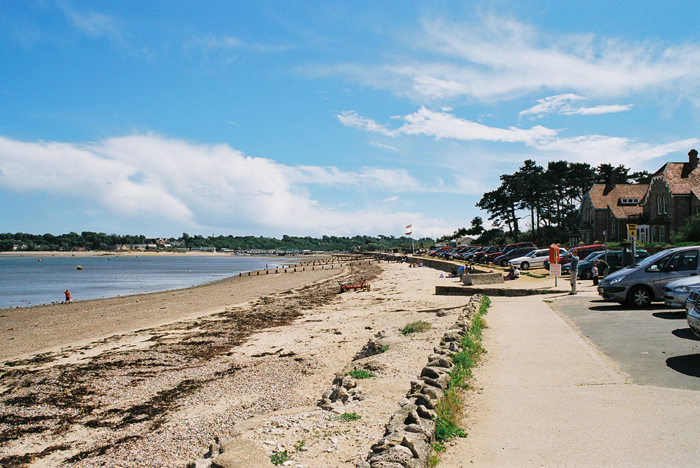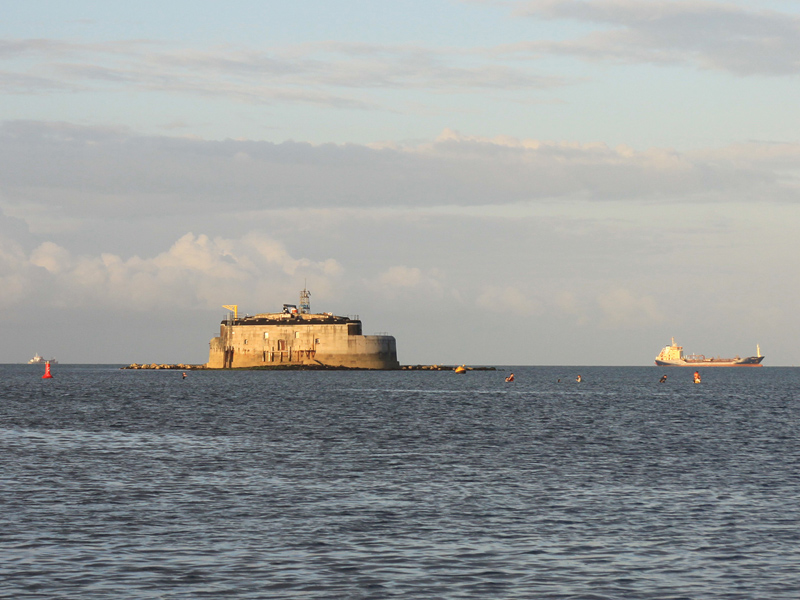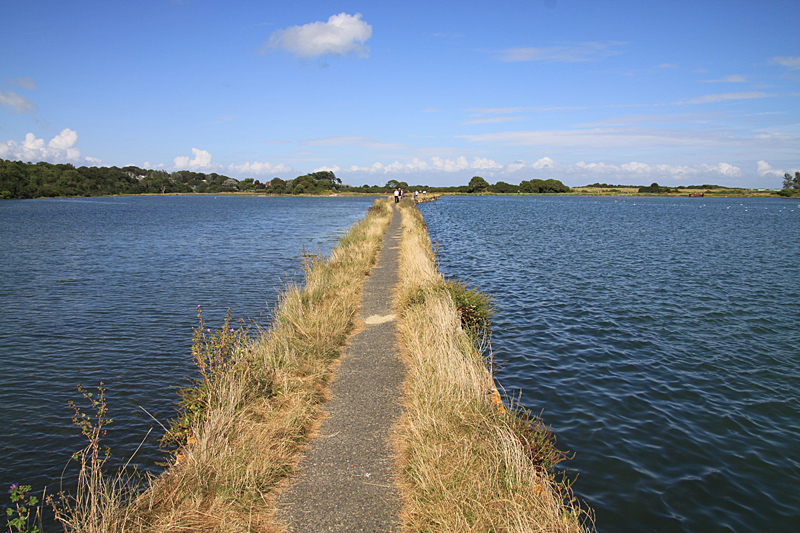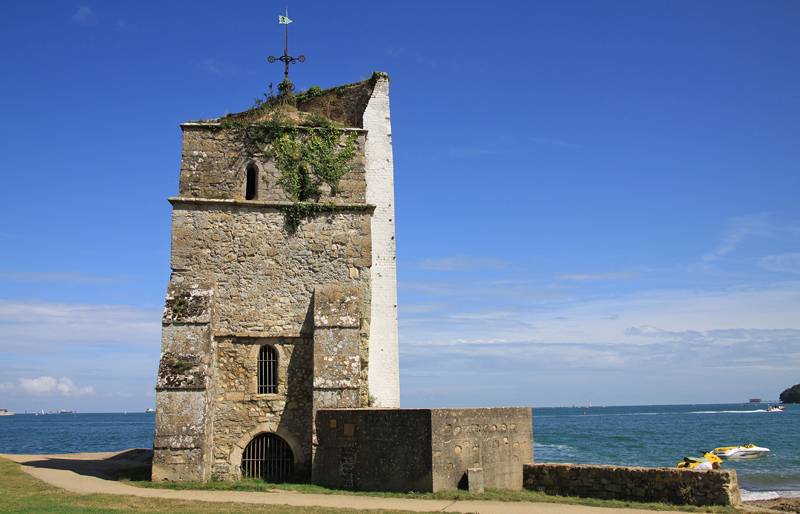- /
- Beaches
- /
- St Helens
Rockpools, part sand part shingle
St Helens
A medium/large sized beach with just a large licensed cafe. Soft sand with some rock pools and seaweed at it's edge, areas of shingle. Quite a few beach huts line the sparse Esplanade and some are old railway coaches converted into huts some time ago. Good views out to sea with St. Helens Fort and large ships passing on a regular basis. Car parking is on only part of The Esplanade and a small car park nearby - all pay and display. No amusements or pubs. It is pretty quiet here because for one reason it is easily missed by car and is not well known by all visitors to The Island. Sometimes popular with water sports.

Nodes Point area is just to the left of The Church Tower ruin (not in above picture), this is also where the rock pools are. Another stretch of quiet beach is just around this corner and directly adjacent is a campsite. No Lifeguards.
 Can you see people in the middle of the sea? St. Helens Fort opposite St. Helens beach has a causeway and at very low tide for just a day or two a year one is able to walk to the fort! Taken with a long lens, they look like they are up to their waists but its an illusion the water is deeper near to the beach than on the causeway.
Can you see people in the middle of the sea? St. Helens Fort opposite St. Helens beach has a causeway and at very low tide for just a day or two a year one is able to walk to the fort! Taken with a long lens, they look like they are up to their waists but its an illusion the water is deeper near to the beach than on the causeway.
 Between St Helens beach and Bembridge harbour is the Duver area and a nice raised footpath which is a nice short cut or just nice for a stroll. When the tide is in (pictured above) it is also another area for crabbing off the side of this footpath.
Between St Helens beach and Bembridge harbour is the Duver area and a nice raised footpath which is a nice short cut or just nice for a stroll. When the tide is in (pictured above) it is also another area for crabbing off the side of this footpath.

This ruin is the first thing you will see when you arrive here at St. Helens. The tower is a relic of the Old Saxon church which stands on the shore. The Norman priory was suppressed and along with its church fell into the sea. A storm in 1703 washed the ruins away leaving only the tower as a landmark for sailors.
The Legend of The Tower. The buttressed thirteenth century tower is all that remains of the old duver church of St Helens the remainder swept to sea as early as the 16th century. The church reported to be in a shameful state but little was done to halt its decline, it collapsed in November 1703 leaving just the tower which has since become a seamark.
Workmen thought this a big joke, but when the time came to return to the mainland they remembered his words and grew nervous, rightly so for after they set sail for Portsmouth in their boat they were never seen again. This information was put in after local lads reported seeing a hooded figure drifting towards the church tower one January night.
Thanks to Jacky Rolls for the information to this section.
